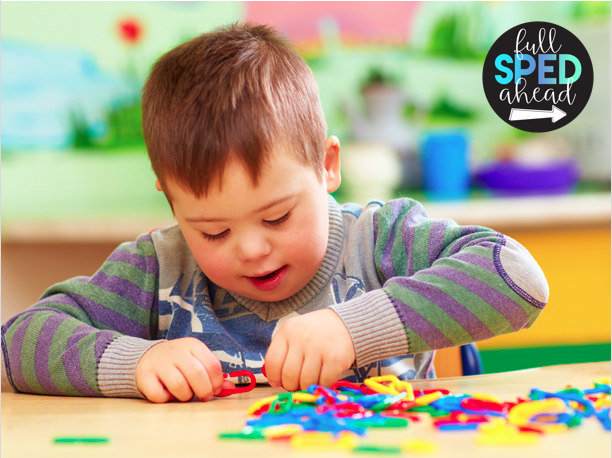Functional life skills are the skills that are necessary for daily living and for establishing quality of life. These are the skills that if not done by an individual him or herself, others will have to do.
Individuals in special education programming often struggle to learn functional skills. It is important to develop these skills in order to increase an individual’s ability to achieve greater independence.
Teaching functional skills also helps mitigate some maladaptive behaviors (for example, self-injury, aggression) by encouraging the individual to choose an appropriate replacement skill.
For example, teaching a child to make choices and indicate what he wants gives him a way to express his preferences. This may reduce frustration and the likelihood of engaging in maladaptive behaviors.

It is important to select skills that are meaningful to the individual and your family and skills that will allow the individual to be as independent as possible. It is important to distinguish between skills that are necessary and skills that are helpful.
For example, while it may be great that a child has a sight word vocabulary of over 100 words, if he or she cannot distinguish the men’s room from the women’s, what good is the sight word vocabulary? It would be helpful for the individual to be able to read the signs and know which rest room applies to him or her (and be able to use it).
Functional skills are in a student’s Individualized Education Program (IEP). IEP goals related to functional skills must specify the level of mastery. This is what is required for the goal to be met and any adaptations that need to be made.
Some skills are taught with 80% mastery. For example, brushing teeth to 80% mastery may be appropriate. Including tooth brushing more than twice per day may help compensate for less thorough brushing. Similarly, safety skills, are taught to 100% mastery due to associated risks. For example, an individual will learn his address and phone number. However, if he or she is not able to give a police officer this information, it is not useful.
There may be a need for adaptations. For example, if individuals are unable to repeat important information, perhaps he or she can have a laminated card. This card has the information that needs to be given to a police officer.
Another great functional life skill is putting on shoes. For many individuals, shoe tying may not be necessary. There are shoe options including Velcro straps, bungee laces, and slip-on shoes that are put on independently and worn appropriately.
An effective way to teach functional life skills is to use task analysis. A task analysis breaks down the skill or routine into its component parts and create routines. The routines should be consistent. They need to be practicing across varying settings and with different people in order to teach the individual to apply the routine in any relevant situation. This leads to effective generalization.
For those who have difficulty with generalization, it is important to teach in context from the start. For example, when teaching the individual how to put on shoes, the individual should also learn that he or she needs to wear shoes when he leaves the house and that shoes stay on when out in public.

Make sure the individual has enough opportunity to practice the skills. Reinforcement is an important component of teaching functional skills. Following routines with motivating items and activities increases the likelihood that the learner will engage in the skill or routine at the next opportunity. Visual supports are a tool that can support the task analysis. These include picture schedules, video modeling, and choice cards.
Don’t forget to work on flexibility with the individual. In the shoe example, while it is appropriate to wear shoes most places, there are exceptions. An emergency situation may necessitate leaving the house without shoes. Also, removing shoes before entering the house is customary for some families. While it is not usually possible to think of every exception, teaching flexibility will make the learned skills truly functional.
Looking for more ideas to create vocational task in your classroom? Check out this post!
Instagram | TeachersPayTeachers | Facebook | Boom Learning Library | Pinterest | Youtube
What are you looking for?
COPYRIGHT © 2025 Full SPED Ahead